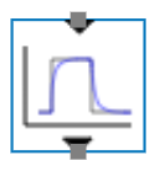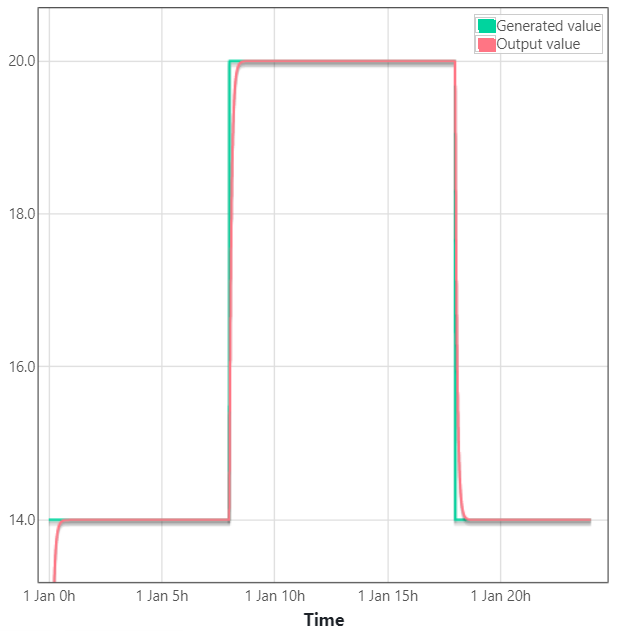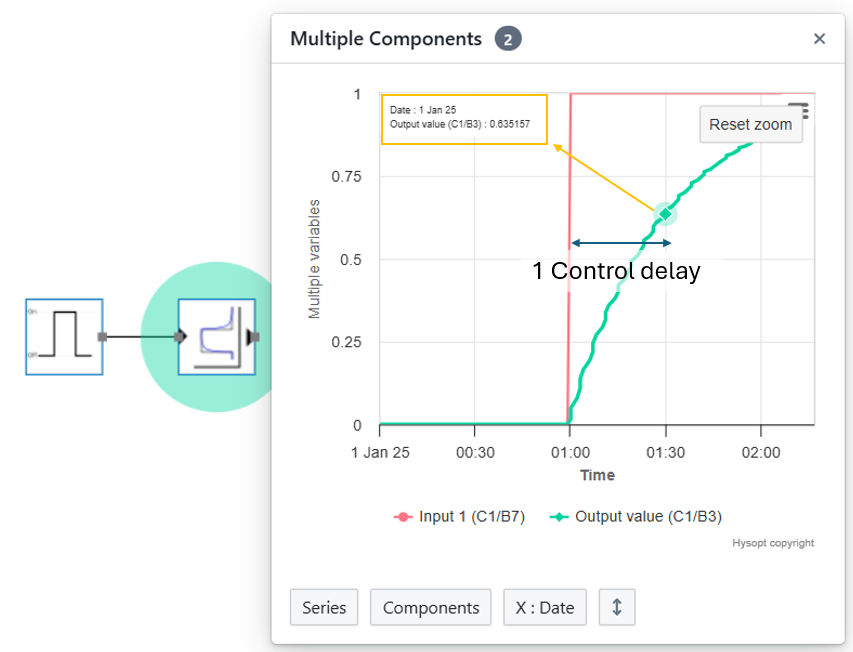Symbol

Usage & working
The low-pass filter is used to create a smoother flow of a point. Take for example a setpoint here which goes first from 14 to 20°C and then back down. The filter smoothens the flow of the setpoint.

The idea behind the smoothening is known as exponential smoothing (or exponential moving average). The update rule is typically written as:
where:
-
An is the new running average (or filtered value) at time step n.
-
An−1 is the previous running average.
-
xn is the expected output for the current timestamp, which is smoothed to An
-
α is a smoothing factor between 0 and 1. In Hysopt, alpha is built in a way that the Control Delay equals the time constant.
In Hysopt, you can define a separate time constant for an upramping change and a downramping change.
The example below shows the output of a low pass filter with a Control delay of 0.5h (1800s). After exactly 1 time constant, the value of 63% is reached.

This component is very useful when it comes to valves and energy centers to create a more sensible, smoother behavior.
